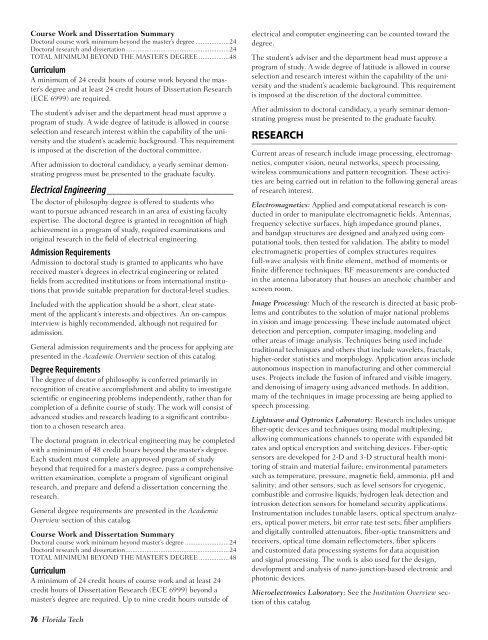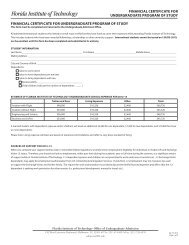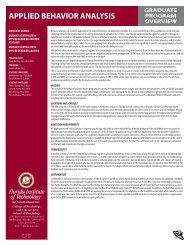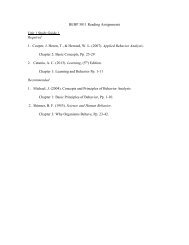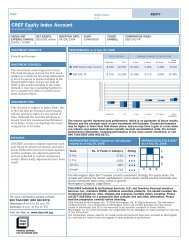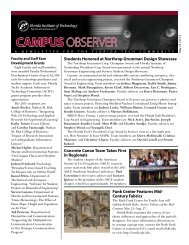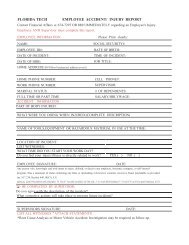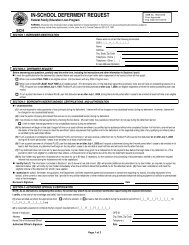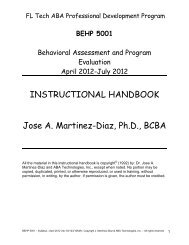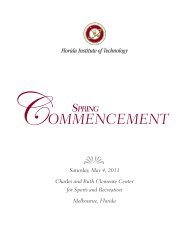2008–2009 - Florida Institute of Technology
2008–2009 - Florida Institute of Technology
2008–2009 - Florida Institute of Technology
You also want an ePaper? Increase the reach of your titles
YUMPU automatically turns print PDFs into web optimized ePapers that Google loves.
Course Work and Dissertation Summary<br />
Doctoral course work minimum beyond the master’s degree ...................24<br />
Doctoral research and dissertation ...........................................................24<br />
TOTAL MINIMUM BEYOND THE MASTER’S DEGREE .................48<br />
Curriculum<br />
A minimum <strong>of</strong> 24 credit hours <strong>of</strong> course work beyond the master’s<br />
degree and at least 24 credit hours <strong>of</strong> Dissertation Research<br />
(ECE 6999) are required.<br />
The student’s adviser and the department head must approve a<br />
program <strong>of</strong> study. A wide degree <strong>of</strong> latitude is allowed in course<br />
selection and research interest within the capability <strong>of</strong> the university<br />
and the student’s academic background. This requirement<br />
is imposed at the discretion <strong>of</strong> the doctoral committee.<br />
After admission to doctoral candidacy, a yearly seminar demonstrating<br />
progress must be presented to the graduate faculty.<br />
Electrical Engineering _______________________<br />
The doctor <strong>of</strong> philosophy degree is <strong>of</strong>fered to students who<br />
want to pursue advanced research in an area <strong>of</strong> existing faculty<br />
expertise. The doctoral degree is granted in recognition <strong>of</strong> high<br />
achievement in a program <strong>of</strong> study, required examinations and<br />
original research in the field <strong>of</strong> electrical engineering.<br />
Admission Requirements<br />
Admission to doctoral study is granted to applicants who have<br />
received master’s degrees in electrical engineering or related<br />
fields from accredited institutions or from international institutions<br />
that provide suitable preparation for doctoral-level studies.<br />
Included with the application should be a short, clear statement<br />
<strong>of</strong> the applicant’s interests and objectives. An on-campus<br />
interview is highly recommended, although not required for<br />
admission.<br />
General admission requirements and the process for applying are<br />
presented in the Academic Overview section <strong>of</strong> this catalog.<br />
Degree Requirements<br />
The degree <strong>of</strong> doctor <strong>of</strong> philosophy is conferred primarily in<br />
recognition <strong>of</strong> creative accomplishment and ability to investigate<br />
scientific or engineering problems independently, rather than for<br />
completion <strong>of</strong> a definite course <strong>of</strong> study. The work will consist <strong>of</strong><br />
advanced studies and research leading to a significant contribution<br />
to a chosen research area.<br />
The doctoral program in electrical engineering may be completed<br />
with a minimum <strong>of</strong> 48 credit hours beyond the master’s degree.<br />
Each student must complete an approved program <strong>of</strong> study<br />
beyond that required for a master’s degree, pass a comprehensive<br />
written examination, complete a program <strong>of</strong> significant original<br />
research, and prepare and defend a dissertation concerning the<br />
research.<br />
General degree requirements are presented in the Academic<br />
Overview section <strong>of</strong> this catalog.<br />
Course Work and Dissertation Summary<br />
Doctoral course work minimum beyond master’s degree .........................24<br />
Doctoral research and dissertation ...........................................................24<br />
TOTAL MINIMUM BEYOND THE MASTER’S DEGREE .................48<br />
Curriculum<br />
A minimum <strong>of</strong> 24 credit hours <strong>of</strong> course work and at least 24<br />
credit hours <strong>of</strong> Dissertation Research (ECE 6999) beyond a<br />
master’s degree are required. Up to nine credit hours outside <strong>of</strong><br />
76 <strong>Florida</strong> Tech<br />
electrical and computer engineering can be counted toward the<br />
degree.<br />
The student’s adviser and the department head must approve a<br />
program <strong>of</strong> study. A wide degree <strong>of</strong> latitude is allowed in course<br />
selection and research interest within the capability <strong>of</strong> the university<br />
and the student’s academic background. This requirement<br />
is imposed at the discretion <strong>of</strong> the doctoral committee.<br />
After admission to doctoral candidacy, a yearly seminar demonstrating<br />
progress must be presented to the graduate faculty.<br />
reSeArch<br />
Current areas <strong>of</strong> research include image processing, electromagnetics,<br />
computer vision, neural networks, speech processing,<br />
wireless communications and pattern recognition. These activities<br />
are being carried out in relation to the following general areas<br />
<strong>of</strong> research interest.<br />
Electromagnetics: Applied and computational research is conducted<br />
in order to manipulate electromagnetic fields. Antennas,<br />
frequency selective surfaces, high impedance ground planes,<br />
and bandgap structures are designed and analyzed using computational<br />
tools, then tested for validation. The ability to model<br />
electromagnetic properties <strong>of</strong> complex structures requires<br />
full-wave analysis with finite element, method <strong>of</strong> moments or<br />
finite difference techniques. RF measurements are conducted<br />
in the antenna laboratory that houses an anechoic chamber and<br />
screen room.<br />
Image Processing: Much <strong>of</strong> the research is directed at basic problems<br />
and contributes to the solution <strong>of</strong> major national problems<br />
in vision and image processing. These include automated object<br />
detection and perception, computer imaging, modeling and<br />
other areas <strong>of</strong> image analysis. Techniques being used include<br />
traditional techniques and others that include wavelets, fractals,<br />
higher-order statistics and morphology. Application areas include<br />
autonomous inspection in manufacturing and other commercial<br />
uses. Projects include the fusion <strong>of</strong> infrared and visible imagery,<br />
and denoising <strong>of</strong> imagery using advanced methods. In addition,<br />
many <strong>of</strong> the techniques in image processing are being applied to<br />
speech processing.<br />
Lightwave and Optronics Laboratory: Research includes unique<br />
fiber-optic devices and techniques using modal multiplexing,<br />
allowing communications channels to operate with expanded bit<br />
rates and optical encryption and switching devices. Fiber-optic<br />
sensors are developed for 2-D and 3-D structural health monitoring<br />
<strong>of</strong> strain and material failure; environmental parameters<br />
such as temperature, pressure, magnetic field, ammonia, pH and<br />
salinity; and other sensors, such as level sensors for cryogenic,<br />
combustible and corrosive liquids, hydrogen leak detection and<br />
intrusion detection sensors for homeland security applications.<br />
Instrumentation includes tunable lasers, optical spectrum analyzers,<br />
optical power meters, bit error rate test sets, fiber amplifiers<br />
and digitally controlled attenuators, fiber-optic transmitters and<br />
receivers, optical time domain reflectometers, fiber splicers<br />
and customized data processing systems for data acquisition<br />
and signal processing. The work is also used for the design,<br />
development and analysis <strong>of</strong> nano-junction-based electronic and<br />
photonic devices.<br />
Microelectronics Laboratory: See the Institution Overview section<br />
<strong>of</strong> this catalog.


